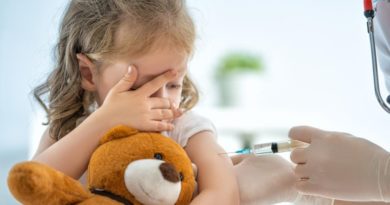Different Takes: How Do We Convince The Vaccine-Hesitant?; Long Covid Is Not Psychosomatic

Opinion writers discuss these covid and vaccine issues.
The Washington Post: The U.S. Has Vaccinated Half Of Adults. The Problem Is The Second Half.
Now that more than half of the adult population of the United States has been vaccinated with at least one dose, and eligibility is open nationwide to all over age 16, the next monumental task is to vaccinate as much of the remaining half as possible. The goal is to reach some kind of herd immunity, when enough people are immune through either vaccines or previous infection that the coronavirus can’t spread fast or far. That threshold might be 70 or 80 percent, a moving target as new variants take hold. To get there, vaccine hesitancy remains an enormous hurdle, born of fear about side effects, denial about the disease, historic neglect by health-care systems, feelings of invincibility or fatalism, and the pernicious impact of disinformation and conspiracy theories. (4/1)
Stat: Needed For Long Covid: A Less Authoritarian Approach
The public has become increasingly concerned about long Covid — ongoing symptoms and disabilities after an acute Covid-19 infection has passed — thanks in part to an intense stream of news and long-form journalism about the condition. Most of this coverage has focused on the largest group of people with long Covid, who often have milder initial infections, and who are generally younger and healthier than those threatened by acute infections. People with long Covid describe the condition as debilitating, with everyday activities like work or mild exercise difficult or impossible to do months after the initial infection. Because symptoms are variable and wide-ranging, this form of long Covid is difficult to characterize. One group of British physicians described it as a “non-specific clinical picture, often dominated by fatigue and breathlessness.” (Diane O’Leary, 4/22)
The New York Times: What Can You Do With Unvaccinated Kids?
Many families will soon face a complicated choice about how quickly to resume their pre-pandemic activities. More than 50 percent of American adults have already received at least one Covid-19 vaccine shot. At the current pace, virtually all adults who want to get vaccinated will have been able to get a shot by July. Yet relatively few children, especially younger children, will have been vaccinated by then. While the Pfizer-BioNTech vaccine may be authorized for children ages 12 to 15 as early as next month, younger children appear to remain months away from being eligible for any vaccine. (David Leonhardt, 4/22)
New England Journal of Medicine: Interleukin-6 Receptor Inhibition In Covid-19 — Cooling The Inflammatory Soup
Viruses cannot replicate by themselves. Instead, they rely on the host for almost all their replicative functions. Similarly, many viruses are unable to cause damage without the host immune system. Because of this, two strategies can often ameliorate disease — antivirals, which block replication, and antiinflammatories, which can limit the damage induced by infection. In the lung, this latter strategy is exemplified by the treatment of Pneumocystis jiroveci, in which treatment with glucocorticoids reduces the severity of disease and the risk of death.1,2 However, because blocking inflammatory pathways raises the possibility of diminishing the host response and increasing replication of the pathogen, antibiotics or antivirals are used simultaneously. (Eric J. Rubin, M.D., Ph.D., Dan L. Longo, M.D., and Lindsey R. Baden, M.D., 4/22)
This is part of the KHN Morning Briefing, a summary of health policy coverage from major news organizations. Sign up for an email subscription.
*** This article has been archived for your research. The original version can be found at Kaiser Health News ***


